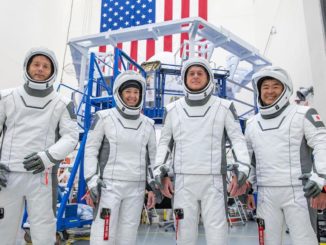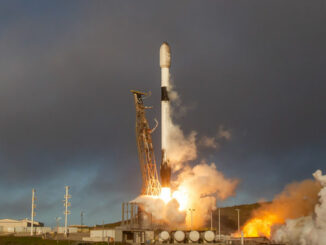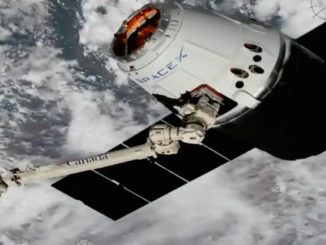
Update 8:40 p.m.: The first Falcon 9 of the night lifted off at 8:10 p.m. EST from Kennedy Space Center.
SpaceX is preparing for a busy week to close out the month of January. Two Starlink flights are set to kick things off as the company prepares to launch a Northrop Grumman Cygnus spacecraft to the International Space Station for the first time.
First up to bat is the Starlink 6-38 mission, which will send 23 more satellites to low Earth orbit. Liftoff of the Falcon 9 rocket supporting this mission is set for Sunday, Jan. 28, at 8:10 p.m. EST (0110 UTC).
Spaceflight Now will have live coverage beginning approximately one hour before liftoff.
SpaceX is calling upon Launch Complex 39A at NASA’s Kennedy Space Center to launch this mission. It will be the 74th launch of a Falcon rocket from this pad (including nine Falcon Heavy rockets) and the 167th launch overall.

The first stage booster supporting this mission, tail number B1062, will be making its 18th flight, having last flown in late November. It previously supported two crewed launches, a pair of GPS satellites and 10 Starlink launches to date.
About 8.5 minutes after liftoff, B1062 will land on the droneship, ‘A Shortfall of Gravitas.’ This will be the 58th booster landing on this vessel and the 267th overall landing of a Falcon 9 first stage booster.
Assuming an successful launch on Sunday, these will be the most current stats:
- 18th launch & landing of B1062
- 74th SpaceX launch from LC-39A
- 167th orbital launch from LC-39A
- 293rd Falcon 9 launch
- 58th landing on ASOG
- 267th Falcon 9 booster landing
- 6th orbital launch from Florida in 2024
- 8th SpaceX launch in 2024
- 19th orbital launch in 2024
Juggling act
Assuming a successful launch of the Starlink 6-38 mission Sunday evening, it will be followed less than four hours later by another Falcon 9 flight: Starlink 7-12 from Vandenberg Space Force Base.
That mission is targeting liftoff at 6:16 p.m. PST (9:16 p.m. EST, 0216 UTC) from Space Launch Complex 4 East (SLC-4E). It will add 22 more Starlinks to the constellation in LEO.
While both missions are in flow, SpaceX, NASA and Northrop Grumman are working through final preparations for the NG-20 launch, the latest cargo resupply mission to the ISS.

This will be the first time SpaceX is launching a Cygnus spacecraft. It’s the first of three such planned missions while Northrop Grumman and Firefly Aerospace continue working on a joint rocket, dubbed Antares 330.
That cargo flight is set to launch from SLC-40 at Cape Canaveral Space Force Station in Florida.
Amid all of this, SpaceX is also continuing to support the private astronaut mission, Ax-3, which is roughly halfway through its two-week stint onboard the ISS. The four astronauts, led by Michael López-Alegría, are set to board their Dragon spacecraft and return to Earth next weekend, weather permitting.




SpaceX getting busy again after a slower start to the year than they had wanted due to some technical issues and weather. Glad they are working hard to get back on track. Looking forward to the April launch of a ULA Vulcan Centaur with Sierra Aerospace’s Dream Chaser space shuttle. That will be a “biggie”. Thanks for all the good coverage and especially the “stats” which are often hard to find from SpaceX themselves.